20W DoB CCC Brand Review
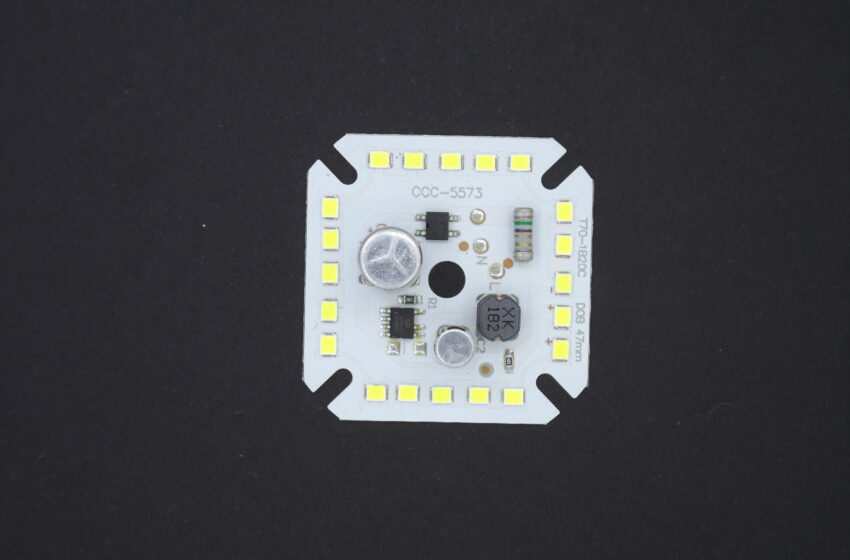
LED lamp brightness should be tested using specific instruments that can determine the intensity of the light in lumens and get the power consumption of the LED using a watt meter. Dividing these two yields a value known as lumens per watt, or Lm/W, which is used to compare LEDs. It implies that the better the LED consumes less power and generates more light. Unfortunately, I lack this equipment and I only evaluate the electrical properties of LEDs and their drivers. Although it is not a comprehensive evaluation, it may be valuable for certain individuals because I have not seen these reviews elsewhere. On the other hand, many low-cost LEDs on the market lack true nominal power.
I’ve got a 20 watt DoB LED that I’d want to put to the test. DoB stands for Driver On Board, which indicates it does not require a separate driver and is powered by mains directly. These DOBs have capacitors, and their advantage over those without capacitors is that these are a form of Buck Converter, which means these types reduce the filtered DC voltage from the diode bridge. So because of this, the LEDs are on most of the time (unlike linear ICs, it is only on at the peak) and as a result, they have low flicker. The flickering of the light in these DoB type is so minimal that they claim no flicker, however this is not entirely correct. Using Buck Converter type for converting AC to DC, driver emit less heat and have a nearly longer life. According to Chinese dealers, the single-capacitor type lasts one year and the two-capacitor kind lasts two years.
Specifications of this type of LED:
Input power: 160-230 AC
Nominal power: 20 watts
If you look at the LED, CCC is written, which seems to be the brand of the device.
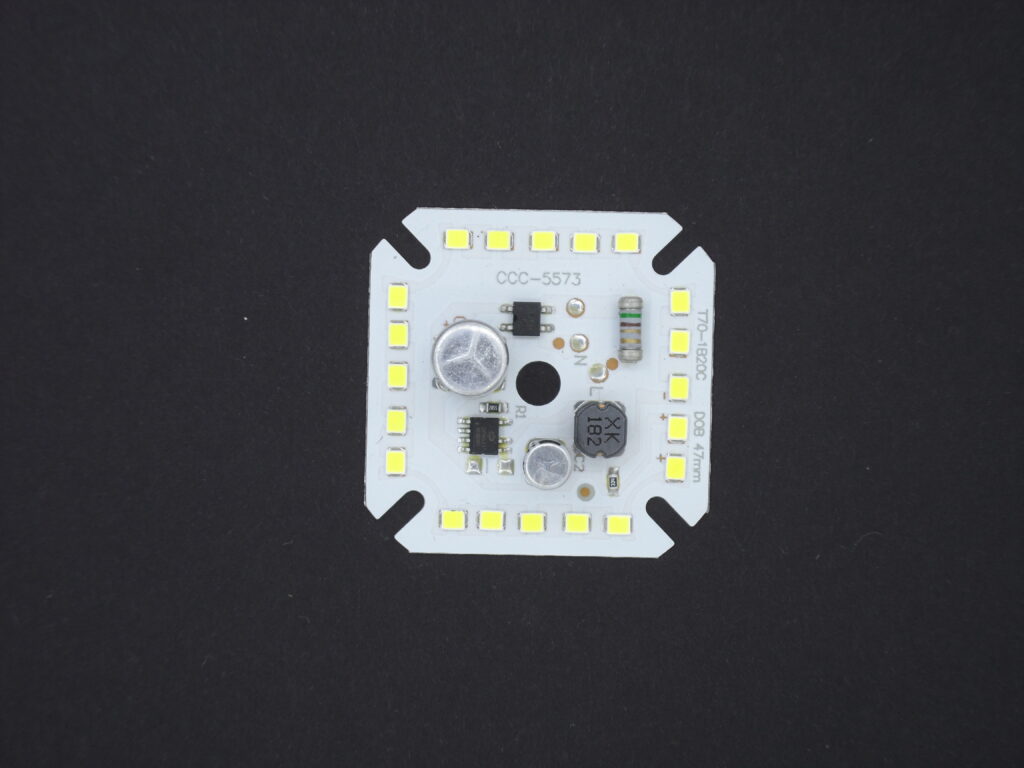
This driver’s IC is DP9511, which, according to the measurements I did and shown below, is most likely the DP9511M IC if you look at the translated datasheet.
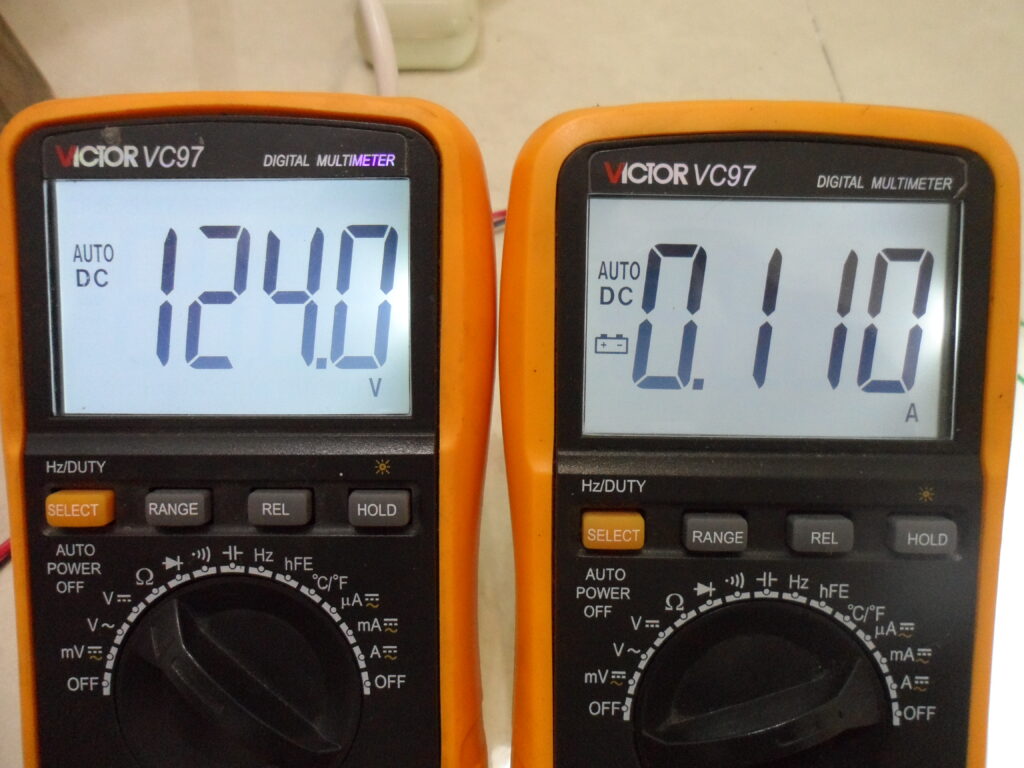
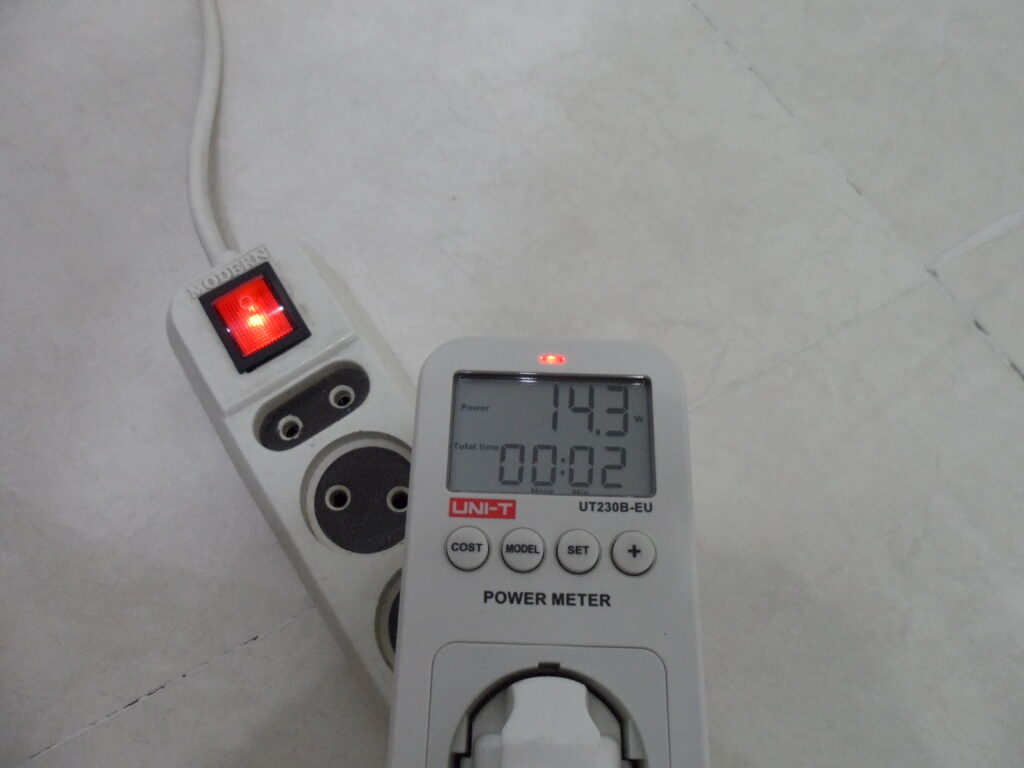
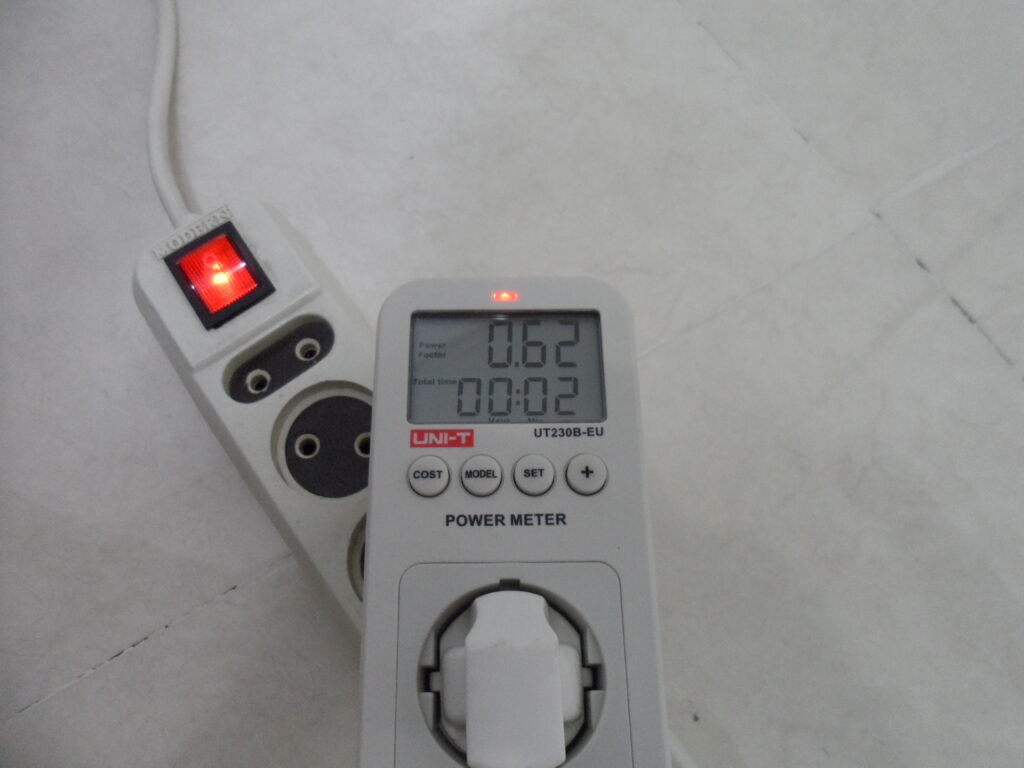
When the temperature reached equilibrium in 2 minutes, the AC wattmeter read 14.3 watts. The current on the DC side of the circuit reached 110 mA. As can be seen, the voltage was nearly 124. (To test the current, I attached an inductor base to an ammeter in series.) The power factor, on the other hand, was 0.62 due to the driver’s Buck Converter circuit and the circuit’s capacitor.